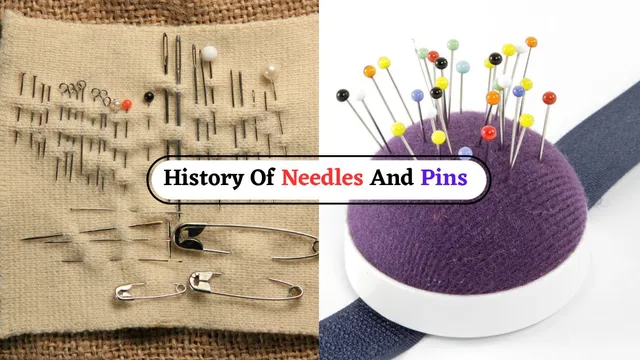- By Aditi Priya Singh
- Thu, 27 Nov 2025 01:55 PM (IST)
- Source:JND
History of Needles and Pins: Needles and pins may seem simple, but they have a richer history than most people realise. Despite their small size, they have contributed to human growth and survival. For thousands of years, these tools were always available when needed, whether it was for sewing clothes, patching equipment, repairing nets or creating intricate artwork. However, only a few people know that the earliest ones weren't made of metal at all. Long ago, before cities even existed, people made tools out of wood, bones or sharp objects. The equipment that people used began to change as their lives changed and they discovered better tools.
Now, needles are made of steel, which is incredibly thin, strong and long-lasting. But their history is full of innovative concepts and creativity. The journey of needles shows how people shaped them; however, they had to survive. These minor details tell a big tale of struggle, clever solutions, and steady progress. When you think about how pins came to be, it hits differently. We hardly notice them these days. But that history goes all the way back to antiquity.
Let’s take a look at the journey of needles and pins that came from bones to now, made from steel, and how people have evolved.
History of Needles and Pins
1. Early Beginnings: The First Needles
The first needle was invented roughly 25,000 to 50,000 years ago. They were made from bone, fish spines or tusks. Back then, people mostly used them to sew animal skin together to make warm clothing so they could stay warm. The first needles were simple with split ends, but later, a few old ones actually came with tiny holes (eye) to hold thread. Because of these basic tools, ancient people managed colder climates more easily.
ALSO READ: Did You Know Who Is The Most Lived Person In The World? Age, Life Story And Rare Secrets
2. Development in Ancient Civilisations
As humans discovered new materials, people started making needles from metals like copper, bronze, Iron and then steel. These metal needles were more user-friendly, smoother, and stronger.
*In the early to mid-4th millennium BCE (c. 4400–3000 BCE), copper needles were discovered in China and the Middle East.
*During the Middle to Late Bronze Age (c. 2000–1070 BCE), bronze needles were utilised in ancient Egypt.
*Around 1300 BCE, iron needles first appeared.
*Steel needles were later introduced during the Western Han Dynasty (206 BCE–9 CE).
Pins in Ancient Times
In ancient times, pins were important tools used to keep clothes together or attach them tightly. The Romans used them, likewise the Egyptians, often making fine ones from metal that worked well and looked good.
3. Medieval and Industrial Era
Europe became a major hub for the production of needles during the Middle Ages. That time, handmade steel needles began to appear everywhere. As a result, fancy stitching became popular, and clothing sewing improved significantly. By the 1700s and 1800s, new devices that produced needles quickly and with much greater accuracy had emerged.
ALSO READ: Did You Know Only Female Mosquitoes Bite Humans And Not Males? Here’s What You Should Know
4. Modern Needles and Their Uses
Today’s needles are:
* Made from premium steel
* Designed for specialised uses such as knitting, sewing, embroidery and medical applications.
* Available in various shapes and sizes
Modern pins also come with plastic or glass heads for safety and grip.

